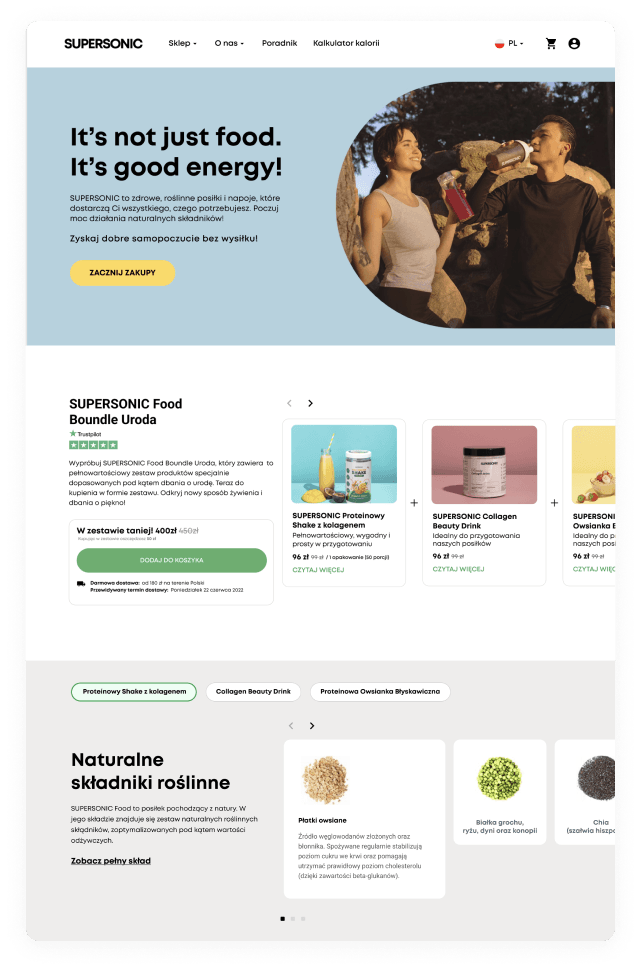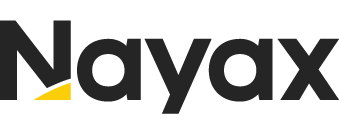

Desk research
Desk Research is a research method that involves analyzing existing sources of information such as reports, scientific articles, statistical data, market research, etc. Desk Research allows for gaining knowledge about current trends, analyzing competition, identifying potential threats and opportunities, and gaining a better understanding of the context in which the further design process will be conducted.

What is desk research?
Desk research, also as secondary research, to the process of gathering and data from existing such as books, articles reports, and online. It involves analyzing synthesizing information that already been collected by others Desk research is typically to gain a comprehensive understanding a particular topic,, or market without need for direct data collection surveys or experiments. is a cost-effective and time-efficient method of research that can provide valuable insights and support decision-making processes.
Deepening knowledge about the market
Desk research allows for gaining knowledge about current market trends, customer preferences, competition, and other market factors. This enables a better understanding of customer needs and expectations, and allows for adapting products to meet their requirements.
Better identification of competition
Desk research enables the identification of competitive products and services in the market. This allows for assessing the unique features and value propositions offered by the competition, as well as how to differentiate oneself and compete effectively.
Analysis of potential customers
Desk research allows for identifying target groups and market segments that may be interested in a digital product. This enables focusing on the right customer groups and adapting the marketing strategy to their needs.
Evaluation of existing solutions
Desk research enables the analysis of existing solutions in the market, both competitive and non-competitive. This allows for evaluating what already exists in the market and how to introduce innovations or improvements to a digital product.
Time and cost savings
Desk research allows for acquiring information and knowledge without the need for costly and time-consuming field research. This enables saving time and money while obtaining valuable data for the process of creating a digital product.

Supersonic Food – Food of the Future. Health food store.

Our cooperation with SUPERSONIC Food began with store optimization, and after a few months it turned into full maintenance of the e-commerce website. Thanks to our cooperation with SUPERSONIC Food, we managed to achieve results that resulted in increased sales and improved website use (User Experience).
I recommend cooperation with Codeq to everyone looking for a dedicated e-commerce partner. Their holistic approach to e-commerce development, maintenance and security was crucial to the success of our online store.
Chris Kozak Founder @ SuperSonic FoodDocument-based research – secondary sources
Document-based research refers to a research method that relies on secondary sources, which are documents or materials that were created by someone other than the researcher. These sources can include books, articles, reports, and other written materials.
Secondary sources provide information and analysis based on primary sources, which are original documents or materials that were created at the time of the event or period being studied. Examples of primary sources include diaries, letters, photographs, and government records.
When conducting document-based research, researchers analyze and interpret secondary sources to gain a deeper understanding of a particular topic or issue. This method allows researchers to build upon the work of others and to examine different perspectives and interpretations.
By using secondary sources, researchers can access a wide range of information and viewpoints without having to conduct their own primary research. However, it is important to critically evaluate the reliability and credibility of these sources to ensure the accuracy of the information being used.
Overall, document-based research using secondary sources is a valuable tool for researchers to gather information, analyze data, and develop new insights in various fields of study.
Secondary research for business
Secondary research for business refers to the process of gathering information and data from existing sources to support business decision-making. It involves analyzing and interpreting data that has already been collected by others, rather than conducting primary research.
There are several types of secondary research that can be conducted for business purposes. These include:
1. Market research: This involves gathering information about the target market, customer preferences, industry trends, and competitors. It can help businesses understand the demand for their products or services, identify potential opportunities, and make informed marketing and sales strategies.
2. Industry reports and publications: These are published reports and articles that provide insights and analysis on specific industries. They often include market size, growth projections, key players, and industry trends. Businesses can use these reports to gain a better understanding of the competitive landscape and make informed decisions.
3. Government data and statistics: Government agencies often collect and publish data on various aspects of the economy, such as employment rates, GDP growth, consumer spending, and industry-specific data. This information can be valuable for businesses to assess market conditions, identify potential risks, and make strategic decisions.
4. Academic research: Academic studies and research papers can provide valuable insights into specific business topics or industries. These studies often involve rigorous research methodologies and can offer in-depth analysis and recommendations. Businesses can use academic research to gain a deeper understanding of complex issues and inform their decision-making process.
5. Company reports and financial statements: Publicly traded companies are required to publish annual reports and financial statements, which provide information about their financial performance, market position, and future plans. Analyzing these reports can help businesses assess the financial health of competitors, identify potential partnerships or acquisition opportunities, and benchmark their own performance.
When conducting secondary research for business, it is important to critically evaluate the sources and ensure the reliability and relevance of the information. This can be done by considering the credibility of the source, the methodology used to collect the data, and the date of publication.
Types of desk research
Desk research, also known as secondary research, involves gathering information and data from existing sources without conducting primary research. There are several types of desk research that can be conducted, depending on the specific objectives and needs of the research:
Case studies desk research
Case studies involve analyzing existing real-life examples or situations related to a specific topic. This type of desk research provides insights into how certain strategies, solutions, or approaches have been implemented and their outcomes. Case studies can be found in academic journals, industry publications, and online databases.
White papers desk research
White papers are authoritative reports or guides that provide in-depth information on a specific topic or issue. They are typically written by experts or organizations and often present research findings, analysis, and recommendations. Desk research involving white papers entails reviewing and analyzing these documents to gain insights and knowledge on a particular subject.
Media analysis
Media analysis involves examining various media sources, such as newspapers, magazines, online articles, blogs, and social media platforms, to gather information and insights related to a specific topic. This type of desk research helps identify trends, public opinion, and media coverage on a particular subject.
Industry Reports
Industry reports are comprehensive documents that provide analysis, insights, and forecasts about a specific industry. These reports often include market size, trends, competitive analysis, and future projections. Desk research involving industry reports entails reviewing and analyzing these documents to understand the current state and future prospects of an industry.
Each of these types of desk research provides valuable information and insights for business decision-making, market analysis, and understanding industry trends. It is important to critically evaluate the sources, consider any potential biases, and ensure the reliability and relevance of the information gathered.
How desk research can help a company?
Desk research can provide valuable benefits to a company in several ways:
1. Market analysis: Desk research helps companies gain a better understanding of their target market, customer preferences, and industry trends. By analyzing market reports, industry publications, and online resources, companies can identify market opportunities, assess market size and growth potential, and make informed decisions about product development, pricing, and marketing strategies.
2. Competitive intelligence: Desk research allows companies to gather information about their competitors, including their market position, product offerings, pricing strategies, and marketing tactics. By analyzing competitor reports, industry publications, and company websites, companies can identify their strengths and weaknesses, benchmark their performance, and develop strategies to gain a competitive edge.
3. Customer insights: Desk research helps companies gain insights into customer behavior, preferences, and needs. By analyzing market research reports, customer surveys, and online reviews, companies can understand customer demographics, buying patterns, and satisfaction levels. This information can guide product development, customer segmentation, and marketing campaigns.
4. Industry trends and innovations: Desk research enables companies to stay updated on the latest industry trends, technological advancements, and innovations. By analyzing industry reports, white papers, and media analysis, companies can identify emerging trends, potential disruptions, and new opportunities. This information can guide strategic planning, product innovation, and investment decisions.
5. Risk assessment: Desk research helps companies assess potential risks and challenges in the market. By analyzing industry reports, government regulations, and media analysis, companies can identify potential threats such as economic downturns, regulatory changes, or shifts in consumer behavior. This information allows companies to proactively mitigate risks and develop contingency plans.
6. Decision-making support: Desk research provides companies with data and insights to support decision-making processes. By analyzing relevant information and data, companies can make informed decisions about market entry strategies, product launches, pricing strategies, and marketing campaigns. This helps minimize risks and increase the likelihood of success.
Overall, desk research helps companies gather information, analyze data, and gain insights that are crucial for strategic planning, market analysis, and informed decision-making. It provides a cost-effective and efficient way to access valuable information without the need for conducting primary research.
Desk research services by Codeq
Defining the research objective
The first step is to clearly define the research objective. Is it about gathering information on competition, market trends, customer preferences, or something else? It is important to have a clear objective that will guide us throughout the research process.
Formulating research questions
Next, we formulate questions for which we want to find answers. questions should be specific and precise to focus on the most important aspects of the research.
Identifying available sources
We move on to identifying and selecting appropriate sources of information. These can be industry reports, scientific articles, statistics, press publications, databases, the internet, and many others. It is important to choose reliable and up-to-date sources that are relevant to our research topic.
Data collection
After identifying the sources, we proceed to collect data. We can use various tools and techniques such as internet search engines, industry databases, scientific libraries, etc. It is important to be systematic and accurate in collecting information.
Data analysis and interpretation
After collecting the data, we move on to analyzing and interpreting the information. We try to extract key findings, trends, and patterns that emerge from the collected data. We can use different methods of analysis such as content analysis, SWOT analysis, comparative analysis, etc.
Preparing the report
Finally, we prepare a report or presentation that includes the collected information, findings, and recommendations. The report should be clear, concise, and visually appealing. It is important to provide the client with information that is easy to understand and that will help them make appropriate business decisions.
This is a general step-by-step guide on how we conduct secondary research at Codeq agency. Of course, each research may have its unique aspects and requirements, but these steps provide a general framework of the research process.
Desk research report for companies
Desk research, also known as secondary research, is the process of collecting, analyzing, and interpreting existing data that is publicly available. It is a research method in which we use information that has already been collected by others, such as reports, articles, statistics, demographic data, market research findings, etc.
Desk research is often used in business to gain knowledge about the market, competition, trends, customer preferences, etc. It is an effective way to gather existing information before making business decisions or developing a strategy.
The process of conducting desk research typically involves several steps. First, we identify data sources such as industry reports, databases, websites, scholarly publications, etc. Then, we conduct selection and evaluation of these data to ensure they are reliable and relevant to our needs. We may also perform comparative analysis, comparing different data sources and drawing conclusions based on differences and similarities.
It is also important to interpret the collected data skillfully. We can use various methods of analysis, such as SWOT analysis, competitor analysis, trend analysis, statistical analysis, etc., to gain a deeper understanding of the information and draw conclusions that can be useful for our business.
An example of applying desk research could be conducting market research before introducing a new product to the market. We can gather information about competition, customer preferences, market trends, etc., to assess the potential demand for our product and tailor our marketing strategy.
In summary, desk research, or secondary research, is the process of collecting and analyzing existing information to gain knowledge and support business decision-making. It is an effective research method that can provide valuable insights and guidance for companies.
Trust our workflow
Great information architecture and comfortable navigation help users achieve their goals on your website. Build a website with us.
Discovery
During the discovery phase, we collect all the necessary data that allows us to make informed decisions in the following stages of the project. It helps us co-create a clear roadmap and product backlog (not sure what you mean by backlog here, maybe replace this with strategy).
Design
The UX and design phase consist of visualizing a previously developed concept. We recreate the information architecture and actualise your business goals through UX. Finally, the digital product comes to life with a specific visual style that aligns with your brand identity.
Development
Using the right tools and tech stack, everything from discovery and design is transformed into the language of technology. Every solution is complemented by extensive testing from a wide range of devices.
Support
The implementation of a digital product is only the beginning of the adventure. We offer support with maintenance and further development and are continuously present for our clients. Equipped with analytical data, we can create hypotheses and conduct A / B tests.
They trusted us
I’ve never had an answer that something is impossible. Instead, each time I could expect a creative approach and searching for solutions. We had good and regular communication between our teams, which meant that we were on track with tasks as much as possible, as well as with current challenges and priorities in Semcore. I mean regular calls and work on Asana.
Tools we use at work
Benefits of collaborating with Codeq
A 12 month warranty
The quality of work is not only empty promises. The warranty will give you assurance that our solution will be free from defects.
An experienced and well-coordinated project team
We employ the best WordPress and Shopify Developers in Poland with many years of commercial experience. We provide the highest quality of code and ongoing communication.
Efficient communication and project management
The refined and tested project management process and the continuous care of the Project Manager guarantee uninterrupted access to the status of our projects.
Technological polyglots
There are many specialists of various technologies on board our team. Thanks to them we are able to be your eyes and ears in the constantly changing world of technology.
Let’s discuss your idea!
Free consultation with an expert – maximum focus on your idea
An analysis of challenges and issues in the field of UX Design and Development
Recommendations for best practices in UX Design and Development
A comprehensive implementation plan from start to finish











